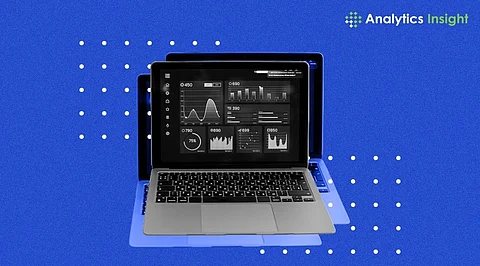
- Insights
- Cryptocurrencies
- Stocks
- White Papers
- Industry
- Geography
- Insights
- Cryptocurrencies
- Stocks
- White Papers
- Industry
- Geography


Businesses rely on data analytics in today's data-driven environment to obtain insightful knowledge and make wise decisions. A data analytics dashboard serves as a powerful tool for visualizing and interpreting complex data sets, enabling organizations to monitor key performance indicators (KPIs), track trends, and identify opportunities for improvement. In this guide, we will explore the steps involved in building a robust data analytics dashboard to drive business success.
Before diving into the technical aspects of dashboard creation, it's essential to clearly define your objectives and identify the specific metrics and KPIs you want to track. Determine the purpose of your dashboard and the audience it will serve. Understanding your goals will guide the design and development process.
Selecting the appropriate data sources is crucial for building an effective dashboard. Gather data from various internal and external sources, including databases, spreadsheets, cloud services, and APIs. Ensure that the data is accurate, relevant, and consistent to provide meaningful insights.
Designing an intuitive and user-friendly dashboard layout is essential for enhancing usability and readability. Consider the needs and preferences of your audience when determining the layout and organization of visualizations. Arrange widgets and charts logically, grouping related metrics together for easy comprehension.
Choose the right visualization tools and techniques to represent your data effectively. Depending on the nature of your data and the insights you want to convey, opt for charts, graphs, tables, maps, and other visual elements. Experiment with different visualization styles to find the most suitable options for your dashboard.
Integrate interactive features and functionalities to enhance user engagement and interactivity. Allow users to filter, drill down, and explore data dynamically based on their preferences and requirements. Implement interactive controls such as dropdown menus, sliders, checkboxes, and search bars to facilitate data exploration.
Prioritize data security and privacy throughout the dashboard development process. Implement robust security measures to protect sensitive information and prevent unauthorized access. Encrypt data transmission, enforce user authentication mechanisms, and adhere to industry best practices and compliance standards.
Thoroughly test your dashboard across different devices, browsers, and screen resolutions to ensure compatibility and responsiveness. Solicit feedback from stakeholders and end-users to identify potential usability issues and areas for improvement. Iterate on the design and functionality based on user feedback and testing results.
Once your dashboard is ready, deploy it to the intended audience and monitor its performance over time. Track usage metrics, user interactions, and feedback to gauge the effectiveness and impact of the dashboard. Continuously monitor data quality, accuracy, and relevance, making adjustments as needed to ensure optimal performance.
Offer training sessions and user support to help stakeholders and end-users navigate the dashboard effectively. Provide documentation, tutorials, and online resources to familiarize users with dashboard features and functionalities. Offer technical assistance and troubleshooting support to address any issues or challenges that may arise.
Data analytics is an ongoing process, and your dashboard should evolve to meet changing business needs and requirements. Continuously gather feedback, monitor performance metrics, and identify opportunities for enhancement and innovation. Iterate on the dashboard design and functionality to keep it relevant, actionable, and impactful.
In conclusion, building a data analytics dashboard requires careful planning, strategic design, and technical expertise. By following these steps and best practices, organizations can create powerful, user-friendly dashboards that empower users to make data-driven decisions and drive business growth. Embrace the power of data analytics and unleash the full potential of your organization's data assets with a well-designed and insightful dashboard.
